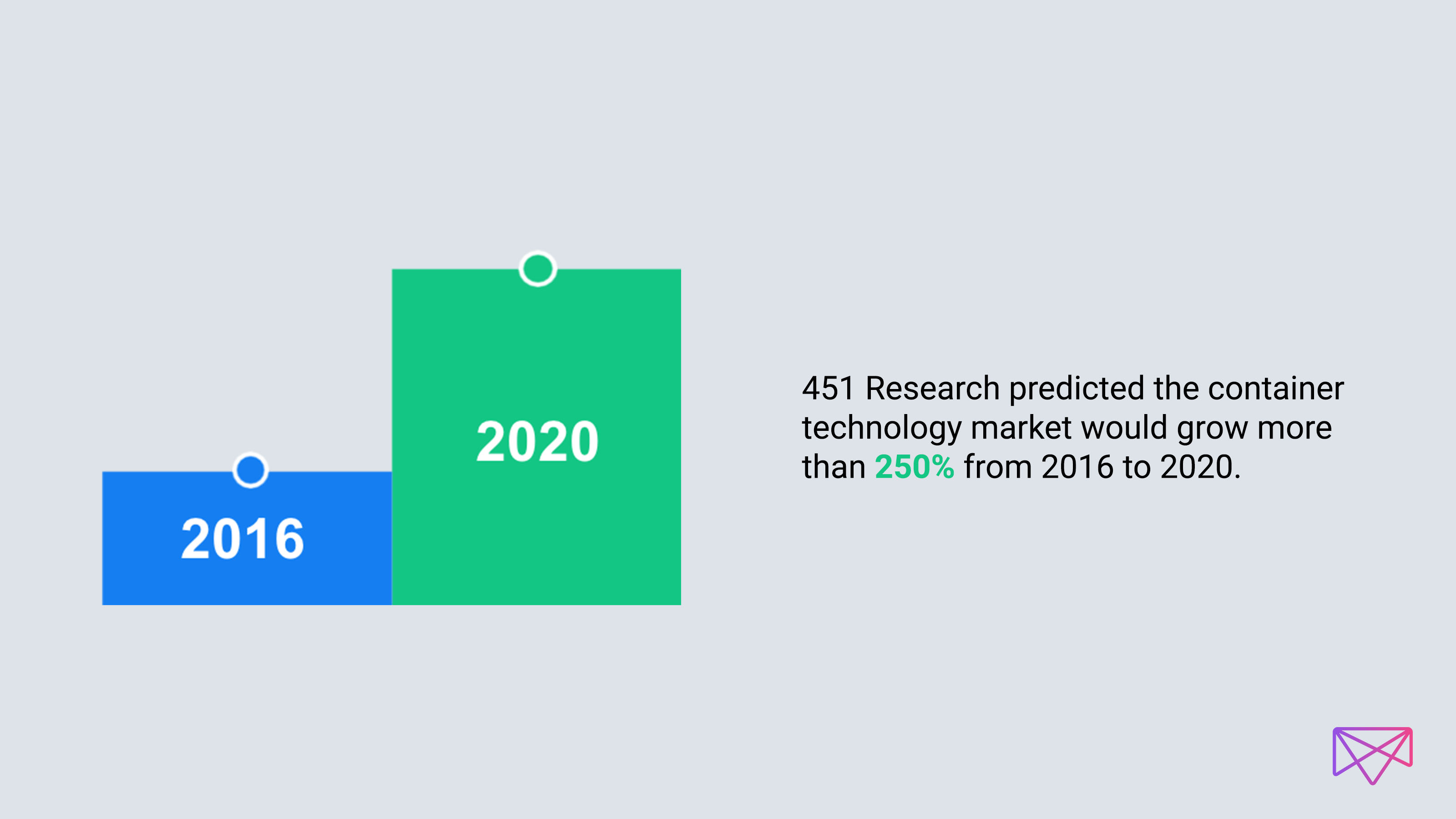
A growing number of companies are following in the footsteps of industry leaders like Google and Twitter, who have used containers for years to build and run their large-scale applications. Containers enable developers to pull together and ship an application with all essential parts (such as libraries) as a single package, making applications portable across different compute environments. In other words, containers enable developers to agilely roll out software in response to customer and market demands.
Container technology gained widespread attention with the introduction of Docker in 2013, and the uptake has been swift. Consider these stats:
- Over half of organizations planned to spend over $50,000 on deploying containers in 2018. Almost a third (32 percent) said they would spend well over $100,000.
- 451 Research predicted the container technology market would grow more than 250% from 2016 to 2020.
- 84% of organizations are running containers in production, compared to 62% of organizations in 2016.
However, as much as containers simplify matters for developers, they introduced a new challenge: managing multiple containerized applications. It's not far-fetched to say you could end up with dozens, hundreds, or even thousands of containers over time. All of these need to be deployed, managed and connected to the outside world for tasks such as scheduling, load balancing and distribution.
That's why a slew of container management solutions hit the market shortly after Dockers' release. One of these—the open source project Kubernetes—is now the de facto standard for container management. In fact, 69% of companies use Kubernetes to manage containers.4
While organizations can choose from multiple container orchestration solutions, Kubernetes remains popular due to its architecture, innovation, and the large open source community surrounding it. And they're putting it to use in numerous ways:
- GE Transportation uses Kubernetes on Mesosphere DC/OS for developer self-service and enablement cutting operational costs down by 50%.
- Royal Caribbean enabled innovative guest experiences on both shore and ship by combining internally developed microservices alongside data services like Apache Kafka and Apache Cassandra.
- The Federal Employment Agency uses a containers-as-a-service platform to increase the flexibility of development and significantly decrease deployment costs.
However, a full Kubernetes solution relies on a number of add-ons and complementary solutions. In other words, while Kubernetes is an incredible container management solution, you need surrounding components to realize your end goal effectively.
Learn more about the Cloud Native Landscape and how to effectively manage a full Kubernetes solution by downloading the eBook, "Kubernetes Bootcamp: How to Deliver an End-to-End Solution"










